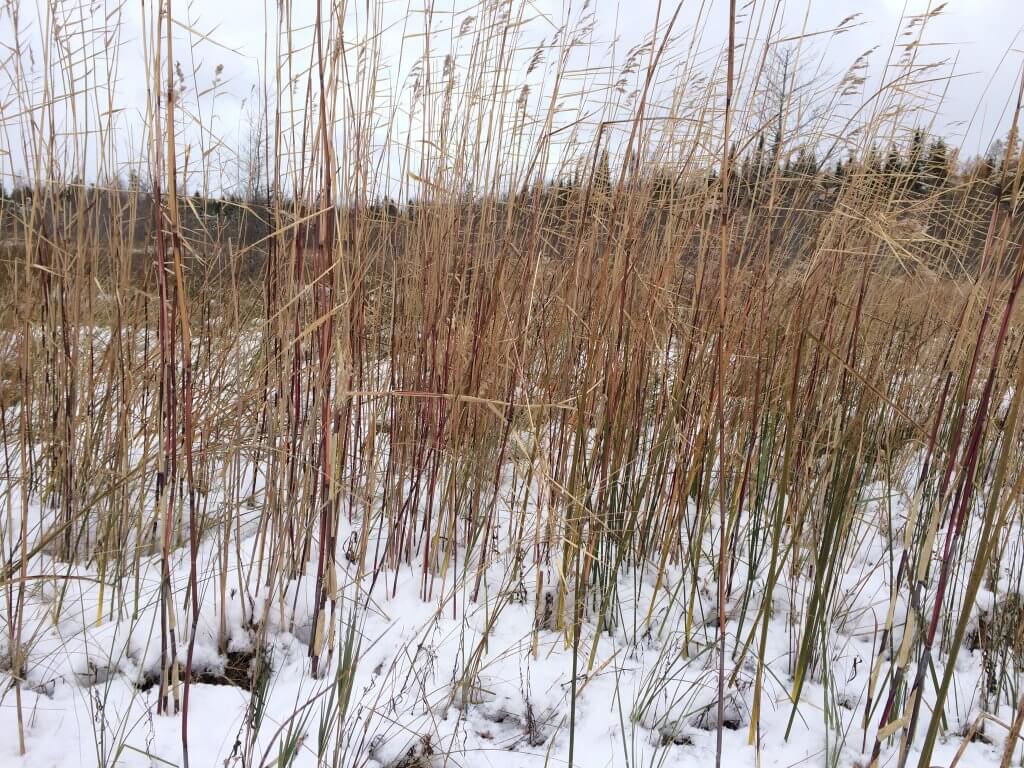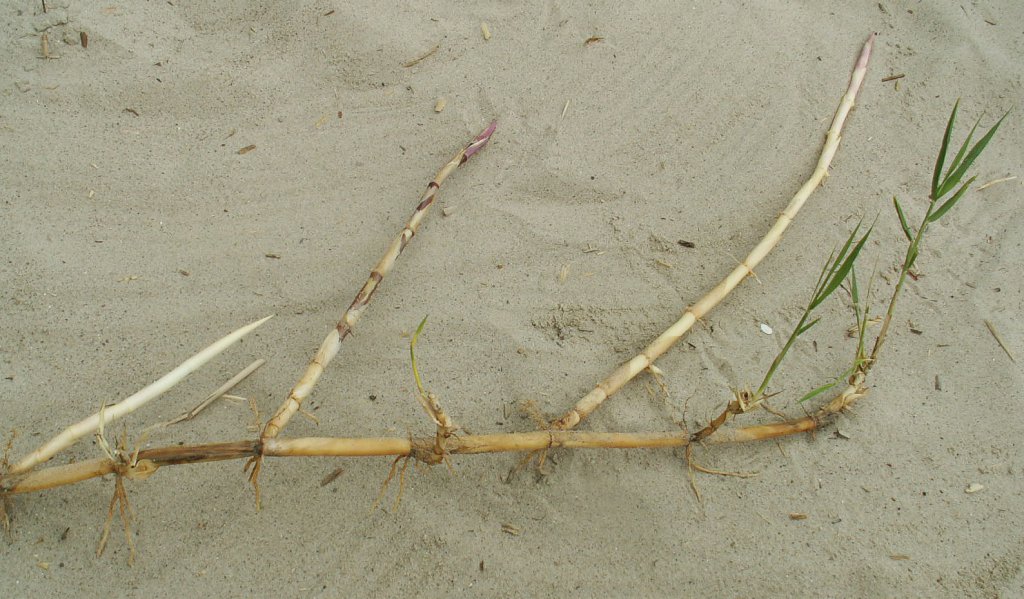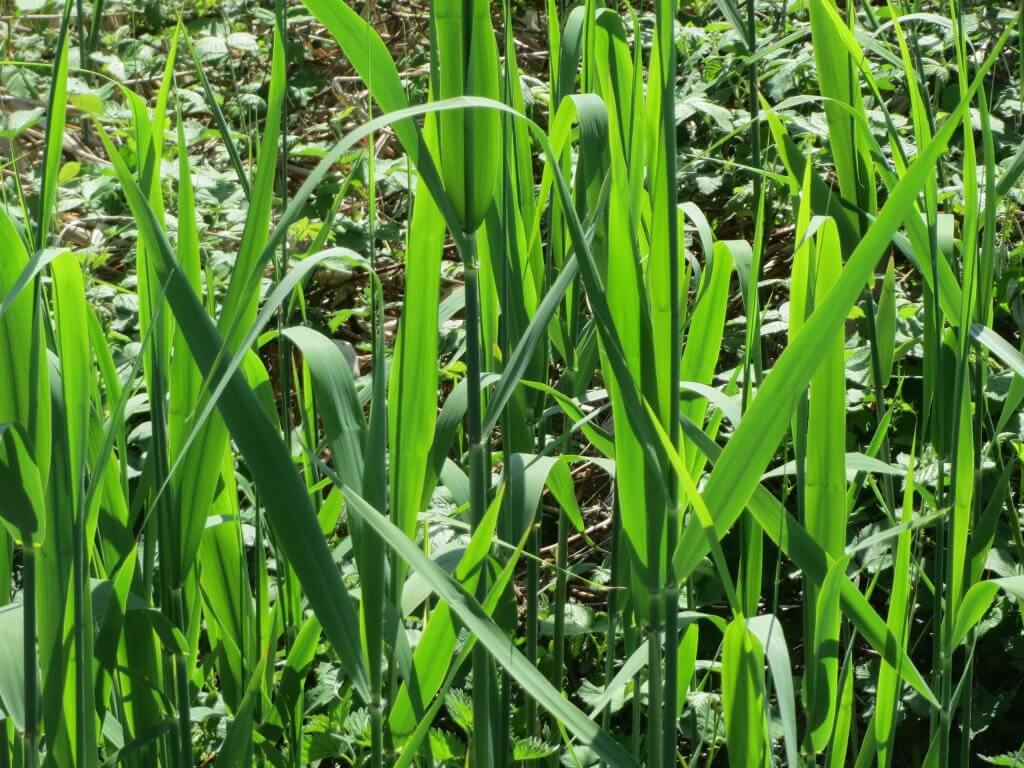Common Reed (Phragmites australis subsp. americanus), is a subspecies of tall, perennial wetland grass that is native to the US. A subject of much scientific debate, it was once thought to be an introduced species from European colonisers. But studies have known shown this subspecies has been established in the US for thousands of years.
The phragmites genus contains four known worldwide species. The Phragmites japonicus which dominates wetlands in east Asia. The Phragmites karka and Phragmites mauritianus, which cover large areas of the southern hemisphere, excluding south America. And finally the Phragmites australis from Eurasia, which is exceptionally closely related to the americanus variety.
As a large grass that grows quickly, phragmites often dominate wide areas, and exclude other native varieties. Many countries consider them an invasive species.
You will usually find them in colonies, with central stems reaching heights of up to 6m in some areas. They have very long leaf blades, usually 4cm wide and up to 50cm long. They form branched, feathery looking clusters of brown/purple flowers that appear in the spring.

Edible parts and other uses
The young stems and shoots can be plucked from the plants to be eaten raw, cooked, pickled or dried. Native Americans would dry and process these stems into a fine powder, which when mixed with a little water and roasted, can create a marshmallow like substance. The shoots can be cooked in a stir fry much like bamboo shoots.
The root can be eaten raw, or cooked in the same way as a potato. And the seeds can also be collected. Although very nutritious, the seeds can be fiddly to collect in any sufficient amount.
With a fairly high amount of sugar carbohydrates, the common reed has a sweet flavoring, that is sometimes compared to liquorice. Even the sap that oozes from cut stems can be collected and eaten raw. Many people choose to collect and gently roll the sticky sap to create sweet tasting edible candies.
Native Americans also utilised the reeds for many everyday objects, from arrow shafts and baskets, to musical instruments and roofing structures.

Cautions
All plant parts are edible, although older leaves and stem would be unpalatable. No toxic lookalikes exist so common reed is a safe plant for those new to foraging in the midwest.
Foraging
When foraging you are likely to come across the introduced australis reed, as it even dominates and outcompetes the native US variety. You are more likely to find native common reed in smaller colonies, intermingled with other native wetland plants. For example along river banks or smaller wetlands. The introduced variety can often be found dominating shorelines in the Great Lakes basin of the midwest. As in invasive species, foraging is greatly encouraged.
Young shoots can be foraged in spring, and the seeds collected towards the end of summer. The roots and rhizomes can be harvested all year round, but will have a sweeter flavoring before flowering. They form carpets of intertwined growth beneath the colony, so should be easy to find and unearth.
Common reed is often a popular choice for artificial pond and lake edges, so you are likely to find it within many urban settings or yards too.

Did you know…
Fossil records containing seeds from the native common reed, prove that the plant was inhabiting wetland landscapes in the US up to 40,000 years ago!
Conclusion
An ancient plant that has long been established across the world. Many cultures valued the sweet, energy giving sugars of its sap and its versatility as a building material. Foraging for common reed is a rewarding experience, as the sweet shoots and sap are also fun to experiment and cook with.
—————Written by Hannah Sweet
Hannah is a freelance writer and graphic designer from the UK. With a penchant for travelling, photography and all things botanical, she enjoys writing about a wealth of topics and issues, from conservation and slow living, to design and travel. Learn more about her writing and design services at www.sweetmeanders.co
Many of our readers find that subscribing to Eat The Planet is the best way to make sure they don't miss any of our valuable information about wild edibles.
See our privacy policy for more information about ads on this site







One Response
I want to make the marshmallow like food the natives would enjoy back in the day. Please send recipe 🙂